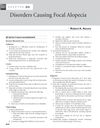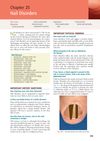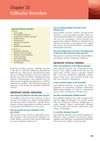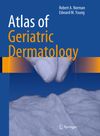Search
forLearn
5 / 7 resultslearn Thymosin Beta 4
learn Neem Oil
natural substance from Neem tree with medicinal and pesticidal properties
learn Azelaic Acid
acid used for antimicrobial, anti-inflammatory and anti-androgenic properties
learn Biotin
supplement to help with hair texture and quality
Research
5 / 1000+ results
research Disorders Causing Focal Alopecia
The document concludes that various disorders can cause hair loss in dogs, each requiring different treatments, and some may heal on their own.

research Nail Disorders
Different nail disorders are treated by targeting their specific causes and using appropriate medications or protective measures.

research Follicular Disorders: Pathogenesis, Clinical Features, Diagnosis, and Treatment
The document concludes that proper diagnosis and treatment of follicular disorders are crucial, with specific treatments for conditions like acne, drug-induced eruptions, and rosacea.

research Atlas of Geriatric Dermatology
The book details skin conditions in older adults, their link to mental health, cancer treatment importance, hair loss remedies, and managing autoimmune and itchy skin.

research Hair Disorders
Different hair disorders have specific treatments and outcomes, with some resolving on their own and others requiring medication or emotional support.
Community Join
5 / 158 resultscommunity Lost density 60% all over scalp in 120 days (4months)
A user lost 60% hair density in 4 months, started finasteride and microneedling, and has greasy, flaky, yellowish scalp. They are awaiting biopsy results, and another user suggested trying ketoconazole shampoo.
community Boyfriend’s hair transformation in 10 months 🥲
A boyfriend's hair improved significantly over 10 months using minoxidil, steroid cream, antihistamine cream, and wild growth oil, with a strict cleaning regimen. His partner's dedicated care contributed to the transformation.
community 6 years of progress. been getting ragged on a lot for my hairline; should i just give up already and shave it?
The user has been dealing with hair loss for six years using minoxidil, finasteride, and dutasteride without success. They are contemplating shaving their head due to continued hair loss and social anxiety.
community The Truth About DUPA and Retrograde: My Research Summary
The conversation discusses the importance of scalp biopsies for diagnosing hair loss conditions like DUPA and Retrograde, which may not be just AGA. It emphasizes that treatments like finasteride and dutasteride may not work if the condition is autoimmune.
community What is this pigmentation around my follicles?
The conversation discusses potential causes of pigmentation around hair follicles, suggesting sebum buildup, autoimmune conditions, or dermatitis. Treatments mentioned include finasteride, dutasteride, and an anti-inflammatory diet, with a recommendation to consult a doctor for a proper diagnosis.